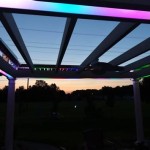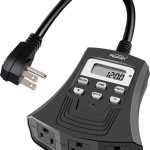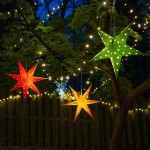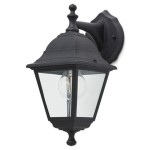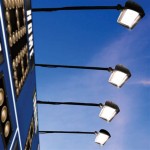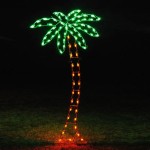Outdoor Strobe Light Photography: Capturing the Dramatic
Outdoor strobe light photography is a captivating genre that empowers photographers to manipulate light and create stunning images. Unlike natural light photography, which relies on the sun and moon for illumination, strobe light photography utilizes artificial light sources to control the scene's lighting. This technique offers a unique opportunity to shape the composition and add drama, vibrancy, and depth to outdoor photographs.
One of the most significant advantages of using strobes outdoors is the ability to freeze motion. By flashing a burst of light, photographers can capture fast-moving subjects with remarkable clarity, effectively eliminating blur. This is particularly helpful for photographing wildlife, sports, and action sequences.
Mastering the Basics: Understanding Your Equipment
Before venturing into the captivating world of outdoor strobe photography, it's essential to understand the fundamentals of the equipment involved.
Strobe lights, often referred to as flash units, are portable artificial light sources that emit a brief burst of intense light. They come in various forms, including:
- Speedlites: Compact and lightweight, speedlites are ideal for photographers on the move. They typically mount directly onto a camera's hot shoe and offer manual and automatic flash modes.
- Studio Strobe Lights: These powerful units are designed for professional studio environments. They offer greater power output and flexibility, allowing for fine-tuning of light quality and direction.
- Monolights: Monolights are a hybrid option, providing the power of studio strobes with the portability of speedlites. They are often favored for location shoots.
Strobe light photography also involves essential accessories:
- Light Modifiers: These accessories, such as softboxes, umbrellas, reflectors, and grids, help to control the shape and direction of light, shaping the quality of light in your photographs.
- Stands and Tripods: Stands provide support for strobe units, while tripods offer stability for the camera, ensuring sharpness in your images.
- Triggers: Radio triggers or sync cords allow photographers to fire the strobes remotely, providing greater control over the timing of the flash.
Harnessing the Power of Light: Shaping the Scene
The artistry of outdoor strobe photography lies in the ability to shape light and create captivating compositions. Understanding key concepts helps photographers transform their vision into reality.
Light Direction: The direction of light significantly impacts the overall mood and drama of a photograph. By positioning the strobes at various angles, photographers can create different effects.
- Front Light: Illuminating the subject from the front creates a flat, even light that is ideal for portraits, landscapes, and still life.
- Side Light: Side lighting adds depth and dimension by creating shadows and highlights, enhancing textures and shapes. It is often used for portraits and wildlife photography.
- Back Light: Backlighting creates a silhouette effect, separating the subject from the background and adding a sense of mystery. This technique is popular for dramatic portraits and landscapes.
Light Quality: The quality of light refers to its hardness or softness. Hard light, produced by a small, concentrated light source, creates harsh shadows and high contrast. Soft light, produced by a large, diffused light source, creates softer shadows and lower contrast.
- Softboxes: Softboxes are highly versatile light modifiers that create soft, diffused light, ideal for portraits and subjects requiring a flattering illumination.
- Umbrellas: Umbrellas, either white or silver, can be used to create soft, diffused light or reflect light back onto the subject.
- Reflectors: Reflectors bounce light back towards the subject, filling in shadows and adding brightness. They are particularly useful for portraits and outdoor shoots.
Mastering Exposure and Synchronization: Achieving Balance
One of the key challenges in outdoor strobe photography is achieving proper exposure. The camera's shutter speed, aperture, and ISO settings must work in harmony with the flash output.
Synchronization: Synchronization ensures that the flash fires at the right moment during the exposure.
- Flash Sync Speed: Each camera has a maximum shutter speed that allows for synchronization with the flash. Exceeding this speed results in a split-second flash that exposes only a portion of the image.
- High-Speed Sync: Some cameras and flashes offer high-speed sync, allowing for flash synchronization at faster shutter speeds. This is beneficial for capturing action in bright daylight conditions.
Exposure Compensation: When using strobe lights, the ambient light (natural light) and the flash output must be balanced. Exposure compensation allows photographers to adjust the overall exposure to achieve the desired balance.
Creative Control: Adjusting the aperture, shutter speed, and ISO settings, and optimizing the flash output allows photographers to control the relative contributions of the ambient light and the strobe light. This control allows for creative exploration, adjusting the balance between the ambient light and the flash to create different moods and effects.
Outdoor strobe light photography is an exciting and rewarding pursuit. It offers photographers the ability to sculpt light, capture movement, and create stunning images that stand out. By understanding the fundamental concepts of equipment, light shaping, and synchronization, photographers can unlock the endless possibilities of this captivating genre.

Creative Lighting Outdoors With Small Flash And Gels Rogue Photographic Design

Outdoor Photography Sunset Studio Strobe Portrait Portraits
Natural Light Vs Off Flash An Eye Opening Demonstration Petapixel

Strobe Lighting Outdoors Outdoor Environmental Portrait Entry Steemit

Outdoor Flash Photography Tips For Natural Or Dramatic Portraits

Help The Sun Using Artificial Light In Outdoor Photography Learn By Zoner Photo Studio

Outdoor Flash Photography Tips For Natural Or Dramatic Portraits

Off Flash 5 Techniques For Dramatic Portraits Rangefinder

On Flash Outdoors Tangents

Off Flash 5 Techniques For Dramatic Portraits Rangefinder
